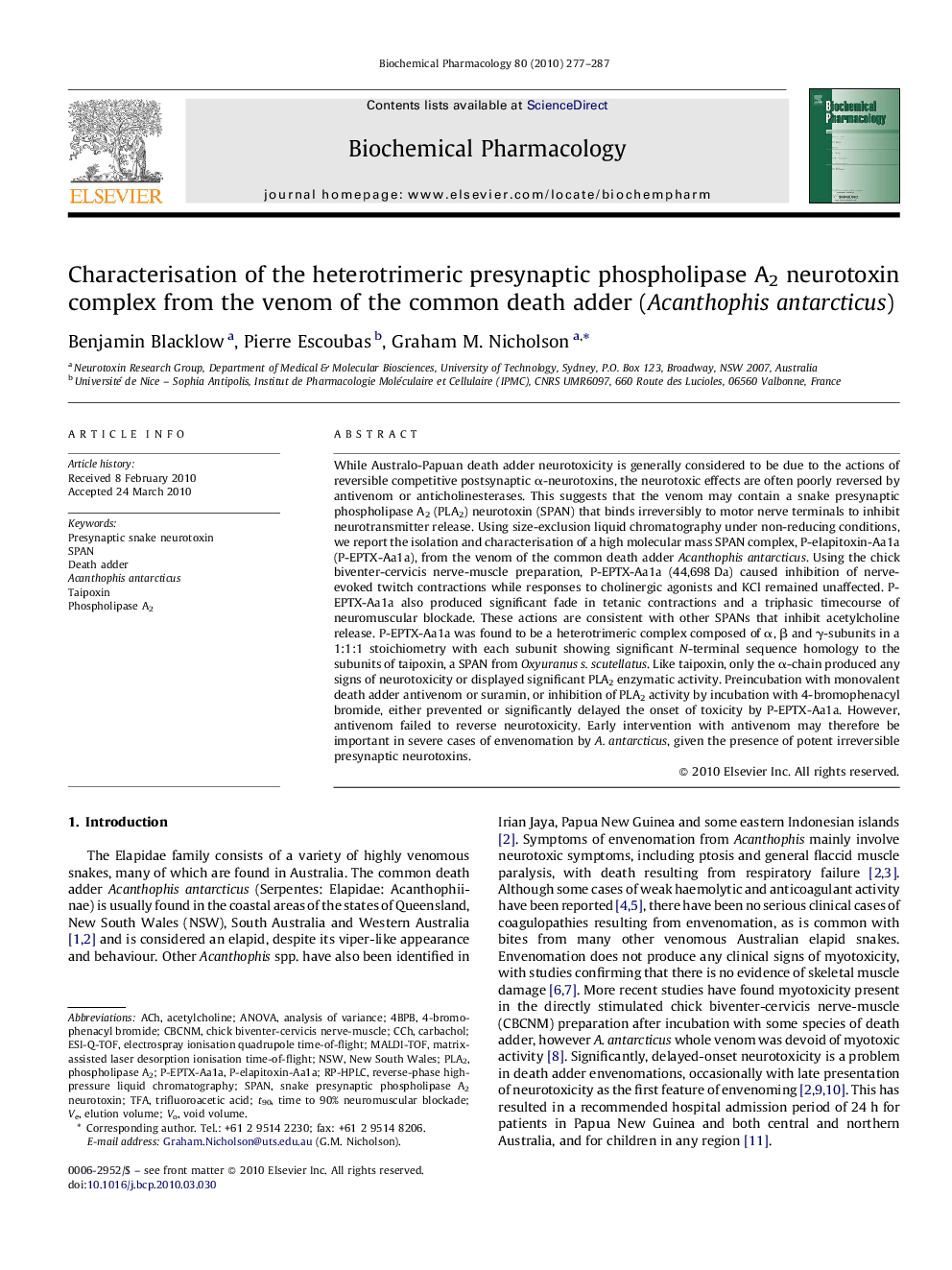| کد مقاله | کد نشریه | سال انتشار | مقاله انگلیسی | نسخه تمام متن |
|---|---|---|---|---|
| 2513600 | 1118424 | 2010 | 11 صفحه PDF | دانلود رایگان |

While Australo-Papuan death adder neurotoxicity is generally considered to be due to the actions of reversible competitive postsynaptic α-neurotoxins, the neurotoxic effects are often poorly reversed by antivenom or anticholinesterases. This suggests that the venom may contain a snake presynaptic phospholipase A2 (PLA2) neurotoxin (SPAN) that binds irreversibly to motor nerve terminals to inhibit neurotransmitter release. Using size-exclusion liquid chromatography under non-reducing conditions, we report the isolation and characterisation of a high molecular mass SPAN complex, P-elapitoxin-Aa1a (P-EPTX-Aa1a), from the venom of the common death adder Acanthophis antarcticus. Using the chick biventer-cervicis nerve-muscle preparation, P-EPTX-Aa1a (44,698 Da) caused inhibition of nerve-evoked twitch contractions while responses to cholinergic agonists and KCl remained unaffected. P-EPTX-Aa1a also produced significant fade in tetanic contractions and a triphasic timecourse of neuromuscular blockade. These actions are consistent with other SPANs that inhibit acetylcholine release. P-EPTX-Aa1a was found to be a heterotrimeric complex composed of α, β and γ-subunits in a 1:1:1 stoichiometry with each subunit showing significant N-terminal sequence homology to the subunits of taipoxin, a SPAN from Oxyuranus s. scutellatus. Like taipoxin, only the α-chain produced any signs of neurotoxicity or displayed significant PLA2 enzymatic activity. Preincubation with monovalent death adder antivenom or suramin, or inhibition of PLA2 activity by incubation with 4-bromophenacyl bromide, either prevented or significantly delayed the onset of toxicity by P-EPTX-Aa1a. However, antivenom failed to reverse neurotoxicity. Early intervention with antivenom may therefore be important in severe cases of envenomation by A. antarcticus, given the presence of potent irreversible presynaptic neurotoxins.
Figure optionsDownload as PowerPoint slide
Journal: Biochemical Pharmacology - Volume 80, Issue 2, 15 July 2010, Pages 277–287